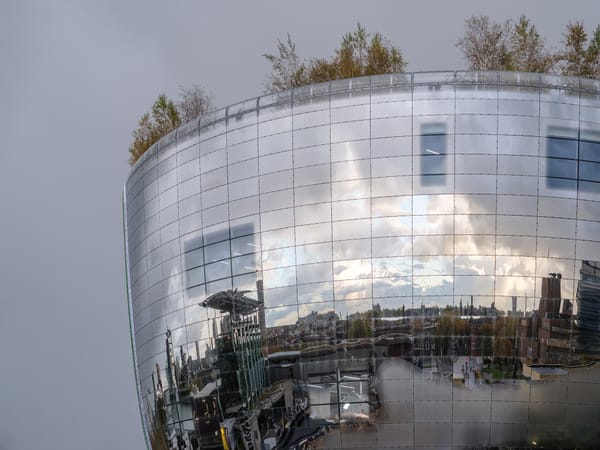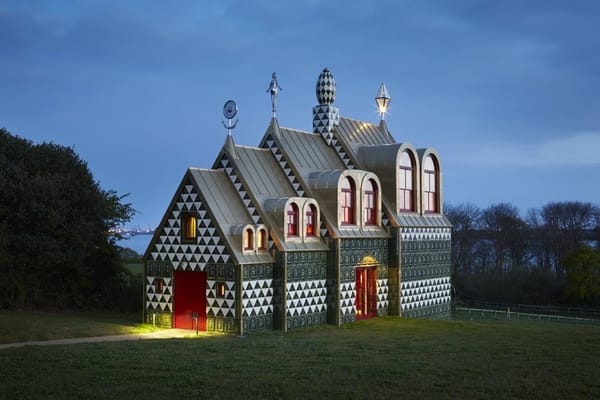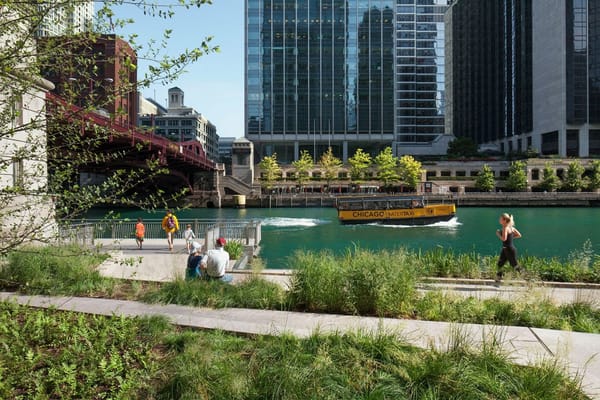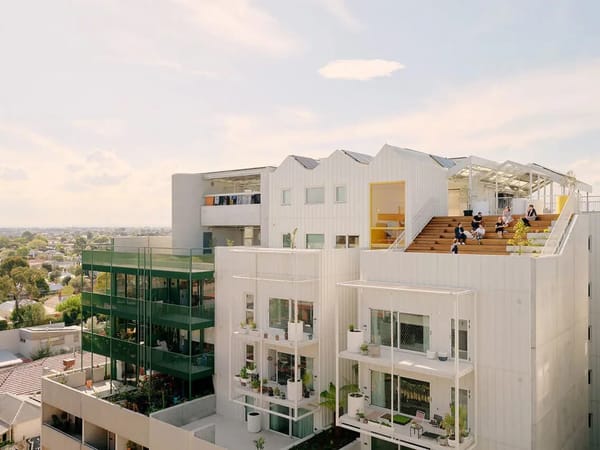The Frontier Interview—Virginia Hanusik
The New Orleans artist on extractive economies, resilience, and the emotional power of art
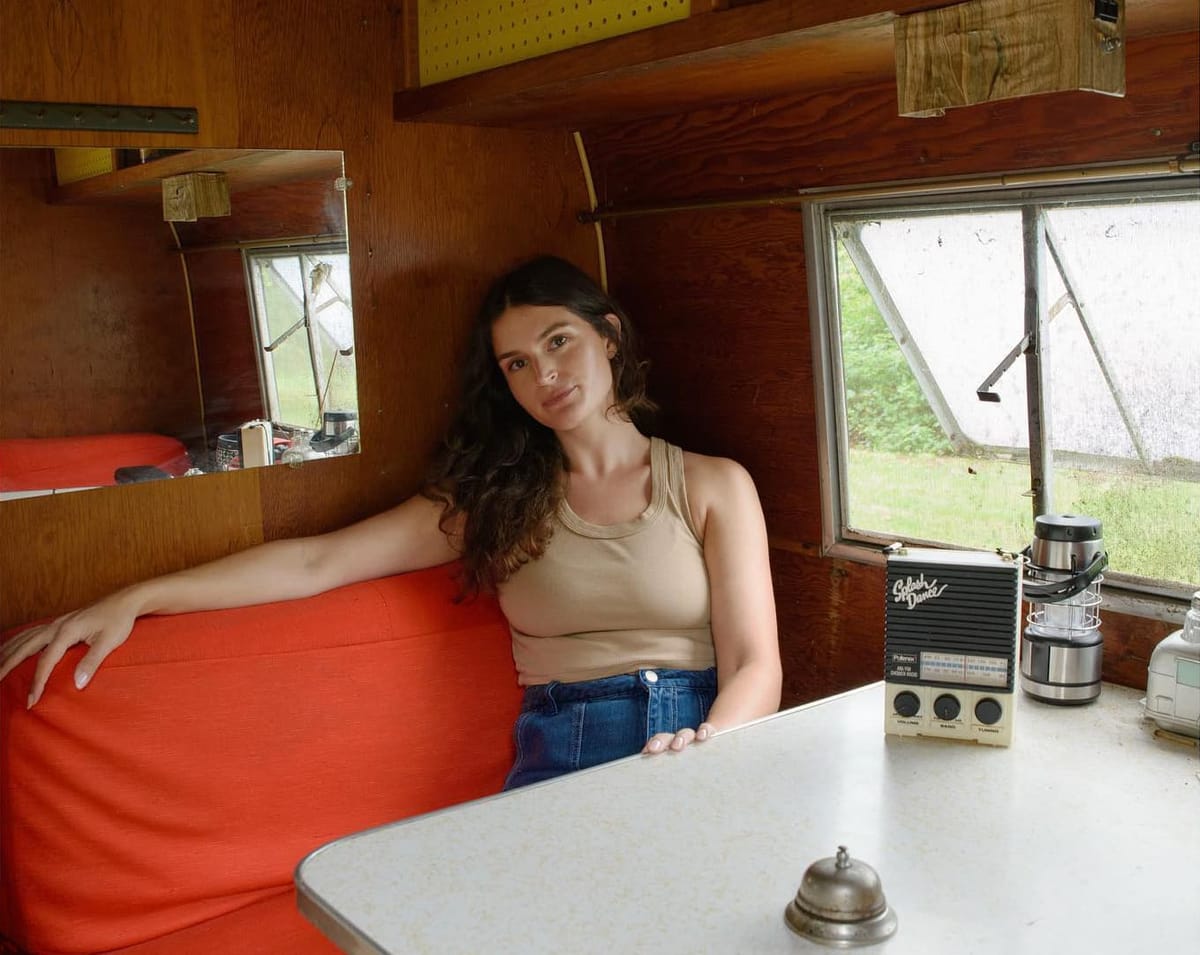
Hi everyone,
This week, an interview with artist Virginia Hanusik about her remarkable new book Into the Quiet and the Light, which places her photographs of coastal Louisiana and its infrastructure into dialogue with contributors writing from many perspectives. It’s a meditation on interlocking systems of power and how, sooner or later, we all must adapt to changing environments.
Close readers will recognize that Frontier Magazine is increasingly focusing on the built environment. Though architecture will be our main subject, we’ll continue to consider it from many angles, including culture and technology. More on this in the issues to come.
Until next week,
Brian
Takeaways from this week’s interview
- The effects of disasters persist for years, even decades. Long after the news media moves on, it’s important to pay attention to the work of finding responsibility and enacting repairs.
- Those effects are likewise the result of decades, even centuries, of decision-making. When in doubt about the reason for harms being distributed unequally, look deeper into the past for answers.
- Art has the power to redirect our focus. If we’re open to them, creative practices can reveal systems that are intentionally obscured—and in the process teach us new things about our world.
🔗️ Good links
- 🏠️🏠️ On Pontchartrain Park, the New Orleans residential community that opened exclusively for the Black middle class—in 1955.
- 🌊️🔌️ “In the family tree of professions, submarine cable work occupies a lonely branch somewhere between heavy construction and neurosurgery.” On the invisible seafaring industry that keeps the internet afloat.
- 🏢️👀️ Some buildings that caught my eye this week: CoBE’s contribution to the Paris Olympics athletes’ village; Atelier Pierre Thibault’s Rue Resther townhouse in Montreal (2021); Módica Ledezma’s moody, geometric equestrian center in Mexico
- 🌝️🌳️ “Trees know better than to let our stories dictate the value of their lives.” Claire Evans on the trees that went to the moon and back.
- 🌲️📚️ “Nemerov’s contribution is to present the American forest as a literary terrain for excursions into art, visual culture, and architecture.”
The Frontier Interview—Virginia Hanusik

Virginia Hanusik’s new book, Into the Quiet and the Light: Water, Life, and Land Loss in South Louisiana (buy in the US or in Canada), pairs her photographs and writings by scholars, designers, activists, and organizers throughout the region. Her art is in dialogue with rich traditions in American art, from Hudson River School painting to late-twentieth-century photography, and meditates upon how our actions change this unsettled coastal landscape. Her contributors contextualize that work with essays, poems, recipes, and more. In this conversation, Hansuik talks about extractive economies, negligence, resilience, and the emotional power of art.
Brian Sholis: You’ve said you “found your way back” when you moved to New Orleans in 2014. What prompted the move and how was it a return?
Virginia Hanusik: While I was studying at Bard College, I volunteered for a student organization that took students to New Orleans for summer and winter breaks. Originally launched after Hurricane Katrina, the program had morphed from its direct-relief and recovery focus to something more focused on extending its relationships with at-risk communities and neighborhoods.
I was enthralled with the people I’d met and the work I was doing. Most of my friends would end up in New York City after graduation, and I knew I didn’t want that. After about three years of visits, I wanted to experience New Orleans firsthand some more, and to learn more about the infrastructure systems there and throughout southern Louisiana. I wanted to understand how the risks of both man-made and “natural” disasters are distributed unequally.
BS: You arrived years after Hurricane Katrina and the Deepwater Horizon oil spill. But do you have a sense of how those events galvanized art and activism in New Orleans, in particular how a sense of local urgency might have increased because of national inaction and passivity?
VH: Arriving late and without generational ties to this place, my perspective is necessarily limited. But in some sense, my interest in the landscape was also inspired by realizing that media attention doesn’t give people who live elsewhere a nuanced understanding of this place. The disaster images were in the news for weeks, but it took years for the Army Corps of Engineers to be held responsible for the levee failures. This is also part of why I wanted to contextualize my photographs with so much writing from people who’ve lived here a long time. These disasters are still present in residents’ lives, whether through illness, a business that folded, or something else—these events haven’t just gone away.
BS: Has the work you’ve done over the past decade changed how you think about where responsibility rests for the changes required to make living on the coast less difficult? How much needs to be systemic versus people making individual adaptations?
VH: I’ve witnessed how people adapt the built form to the gaps in federal-level responses to disasters—and, for that matter, to corporate negligence. It can feel like a patchwork approach: outside the levee system, which is meant to protect land from floods, you’ll see someone’s house built at grade next to one lifted twelve feet above the ground next to one lifted twenty feet. Seeing those odd juxtapositions got me asking “Why is it like that?” You start to learn about things like flood-insurance policies, and about who does and doesn’t have access to such invisible infrastructural supports. Who can afford to raise their homes? Who can afford a few weeks without power, or has the resources to live somewhere else for a few months while their home is rebuilt? The answers to these questions map too neatly onto racial and class lines.
BS: I’d like to zero in on your photographs. Can you elaborate on what your first pictures, from a decade ago, were trying to describe? How do they feel to you now, compared to your latest photographs?
VH: I think it took me a few years to orient myself here, though there are still many things I am still learning about. At the outset I was also trying to understand the landscape itself. I grew up in upstate New York, a place that has been venerated through landscape painting and has become an emblematic image of “the American landscape.” I had to re-learn how to see places and how to value the landscape while at the same time learning about all the engineering that has gone into this place.
I’ve now hit a point where I’m more focused on systems, in framing my projects through a discussion about impacts. The buildings and “natural” forms I’m photographing are symbols of larger, complex issues around extraction and climate change, for example, but also about beauty. I’ve also become more comfortable, having been at this for a decade, with what I don’t know. I can appreciate more the different ways people interpret my work.
BS: This book has many contributors, and the writing takes many forms: academic and journalistic nonfiction, memoirs, a recipe, poetry. Can you talk about why you weren’t interested in publishing a typical monograph of this body of photographs?
VH: Doing the book this way is stylistically and conceptually related to the work itself and helps the book to point at structural factors and the built environment as broadly as possible.
Art, too, can be a form of extraction. By gathering many other voices I hope to not only contextualize the photographs but also to share with readers the people from whom I’ve learned so much. There are no portraits of people in the images that populate the book, but I’ve gained so much from my relationships with the people of this place. I wanted to honor that.
And as for the formats: we left it up to everyone we invited to contribute to the book, and I’m delighted the book represents so many disciplines and genres.

BS: One way the book differs from other work of yours I’ve seen is the absence of color. Is there something about printing only black-and-white images that helps create a distance, that helps people see bigger structures?
VH: Perhaps, but I do feel like black-and-white photography can create emotional qualities on par with color images. But it’s a quiet body of work, one that encourages you to sit with it, to think about how these broad political and economic forces shape the land.
The choice is also part of my not wanting to over-aestheticize disasters. Some photographers make you look directly at destruction, close-up and in full color. I wanted a different emotional range in the book, one that fits in better with the written contributions.
BS: You studied under Stephen Shore, the artist who perhaps more than any other used color photography to define the American landscape, yet your book title refers to Robert Adams, who has had an equally outsize influence through black-and-white pictures. I love Shore’s work, but am on team Adams forever and ever. What does Adams’s example provide?
VH: Let me preface my comments, just in case Stephen sees this, by saying I love Stephen and Robert’s work in different ways. [Laughs] Robert Adams’s work, both his pictures and his writing, touches my soul, shapes how I see the world. The quieter, more contemplative moments give his work a spiritual quality that transcends the devastation he so often depicts. In some sense, through the barest means, he achieves the maximum emotional impact. If I ever make a picture or a body of work half as touching and as visceral as his, I would feel like I’ve had success in my life. Until then, I’ll just keep trying.


